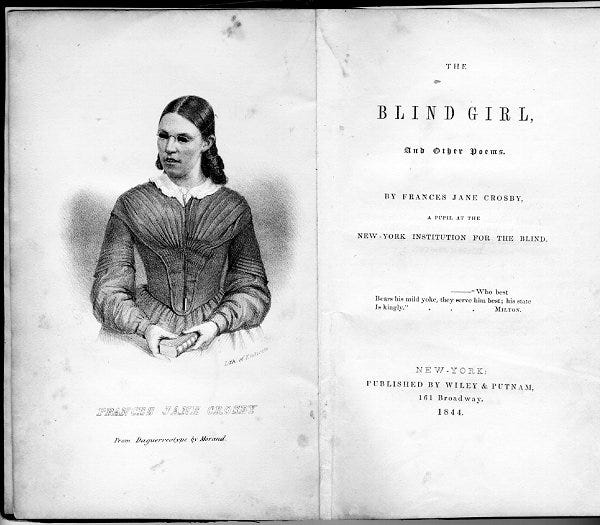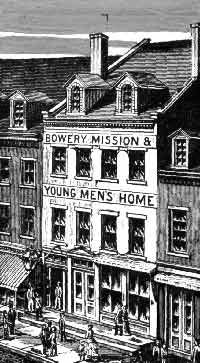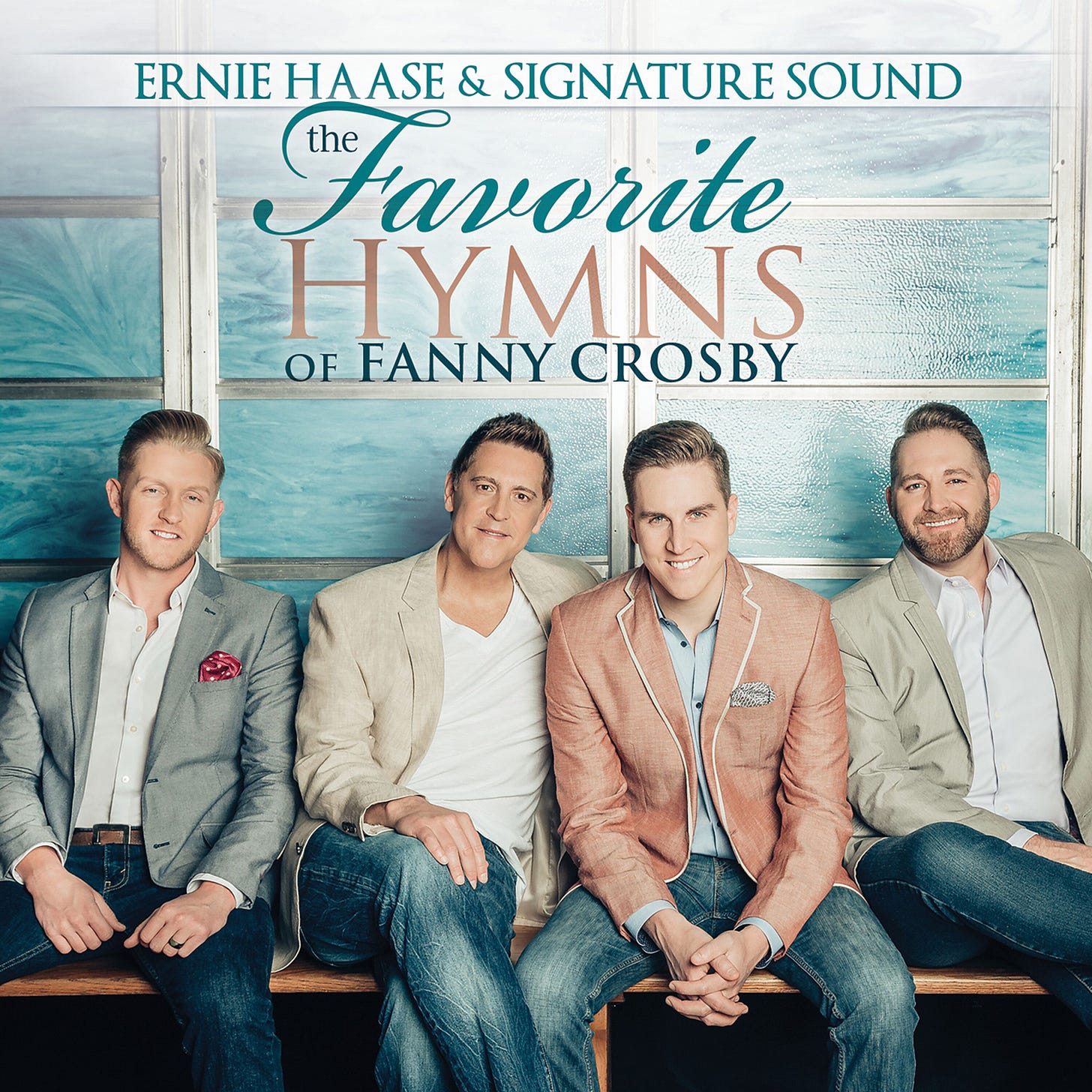The Unwavering Faith and Prolific Creativity of Fanny Crosby

Greetings from the Big Apple! Kenneth and I are in New York City for a conference, soaking up the stunning fall weather—sunny, 70°, and endless blue skies as well as endless speakers. 🙂

Known as the city that never sleeps, NYC is home to iconic landmarks like the Macy’s Thanksgiving Day Parade, Rockefeller Center, and Broadway.
Whenever we visit a big city, we love diving into its history, whether from a bus tour, a walking tour, or chatting with locals. This week, we experienced two highlights worth sharing.

First, we attended Times Square Church, nestled in a beautiful theater right off Broadway. Founded by evangelist David Wilkerson, this vibrant church draws attendees from 65 countries each Sunday. The gospel music and powerful choir were truly uplifting—if you’re in NYC, I highly recommend joining the congregation, even just for a visit!
The second highlight was learning about one of my favorite Hymn writers and famous New Yorkers, Fanny Crosby.
With nearly 8,000 hymns to her name, Fanny Crosby’s music has sold over fifty million copies, leaving an indelible mark on the world. Ira Sankey once remarked that much of what he and D.L. Moody accomplished was thanks to Crosby’s inspiring music.

Fanny Crosby (Mrs. Frances Jane Van Alstyne) is synonymous with modern evangelism. Her name evokes beloved gospel hymns like “Blessed Assurance,” “Rescue the Perishing,” “In the Garden,” “Pass me not, oh gentle savior,” and “Saved by Grace.” Surprisingly, even gospel enthusiasts may not realize the sheer volume of her work—her publishers hold over 5,500 hymns, and she claimed to have written at least as many more, totaling around 8,000 religious compositions. Crosby’s songs have been used in revivals, churches, and mission fields, serving as a powerful tool for evangelism.
Born on March 24, 1820, in Southeast, New York, Fanny lost her sight just six weeks later due to a doctor’s malpractice. Despite this, she embraced her circumstances with remarkable grace, believing her blindness was part of God’s plan. She once wrote, “Blindness cannot keep the sunlight of hope from the trustful soul,” embodying a spirit of resilience.

Once a preacher sympathetically remarked, “I think it is a great pity that the Master did not give you sight when He showered so many other gifts upon you.” She replied quickly, “Do you know that if at birth I had been able to make one petition, it would have been that I should be born blind?” “Why?” asked the surprised minister. “Because when I get to heaven, the first face that shall ever gladden my sight will be that of my Savior!”
Fanny’s positive outlook was likely influenced by her distinguished ancestry. Her lineage traces back to early New England settlers, including Simon Crosby, a founder of Harvard College. Her great-grandfather, Isaac Crosby, fathered nineteen children, even requesting a furlough during the Revolutionary War to meet them for the first time. Fanny’s legacy is a testament to her faith and enduring spirit.
As a child, Fanny began memorizing Bible verses, honing her remarkable memory and laying the foundation for her future as a hymn writer. Evenings were spent on a favorite rock, soaking in the sounds of nature while reciting scripture. This peaceful scene foreshadowed the Christian poet she would become.
Upon arriving in New York and after a few days of rest, they met Dr. Mott, who kindly informed them, “My child, you can never be made to see.” While her mother was heartbroken, Frances remained optimistic, believing more joy awaited her. This hopeful spirit inspired her first poem at age eight:
Oh! what a happy soul I am! Although I cannot see, I am resolved that in this world Contented I will be. How many blessings I enjoy That other people don't! To weep and sigh because I'm blind I cannot nor I won't.
Fanny Crosby was eleven when the first school for the blind opened in the United States, and she received her education at the early New York Institution. She fondly remembers Dr. Russ, the first superintendent, and often expresses her gratitude, saying, “I love him dearly.” The time spent there profoundly shaped her life, nurturing her early love for literature and music.

One of the major benefits of the Institute for the Blind was the chance to meet distinguished visitors. Notables like William Cullen Bryant read their poems, Horace Greeley frequently dropped by, President Polk made a memorable visit, and General Winfield Scott stirred excitement among the students. Fanny Crosby was particularly taken by Henry Clay’s persuasive voice. During her time there, a young assistant named Grover Cleveland impressed both teachers and students with his sincerity and talent, leading them to predict his future as President.
In the 1854 teachers’ list, Grover Cleveland is noted as an instructor in the Literary Department at the New York Institute for the Blind. As a young man, he formed a lifelong friendship with fellow instructor Fanny Crosby. In her 1903 book, she reflected on this young man who would eventually become President of the United States.
After completing her studies, she taught grammar, rhetoric, and history for eleven years. Her talent for writing was natural, with her thoughts often flowing into rhyme. While teaching, she published her first volume, The Blind Girl and Other Poems, in 1844, followed by Monterey and Other Poems and A Wreath of Columbia’s Flowers. Although these works are now largely forgotten, her true calling emerged in 1864 when William B. Bradbury, a sacred music composer, encouraged her to write hymns for Sunday school, marking the beginning of her significant impact in that field.

The most significant event during this period was her conversion at age thirty-one. Although she had been religious since childhood, it was a vivid dream about a friend asking if they would meet in heaven that prompted deep reflection. Soon after, during a singing of “Alas! and did my Saviour bleed,” she fully committed herself to God, experiencing a profound sense of joy and light. This transformative moment shaped her inner life, work, and the sentiments expressed in her hymns.
Fanny Crosby married Alexander Van Alstyne in 1858. Both were blind. By the time of her marriage, Fanny was well into her career as a religious poet. In 1851, she collaborated with George F. Root, a key figure in American music, producing around sixty songs together. Their works, including “There’s Music in the Air,” “Hazel Dell,” and “Bird of the North,” became beloved hits of the era.

Fanny also collaborated with William B. Bradbury, a devoted composer known for his Sunday school hymns like “Just as I Am” and “He Leadeth Me.” His contributions linked traditional choral styles with the emerging gospel music genre, ensuring his legacy in American hymnology.
Where the fields are robed in beauty And the sunlight never dies.
Fanny formed a strong bond with Bradbury, expressing years later to one of his namesakes, “Of all my friends, I loved him the best. When I get to heaven, I will ask first for William B. Bradbury.”
Fanny Crosby collaborated successfully with Mrs. E. L. Knapp, creating beloved hymns like “Nearer the Cross, My Heart Can Say” and the famous “Blessed Assurance.” The latter was inspired by Mrs. Knapp playing the melody and asking what it meant to Miss Crosby. “It means this!” she replied, capturing the spirit of the music in words. “Blessed Assurance” has always been one of the most requests hymns for me to play and sing through the years.
Crosby also collaborated with William H. Doane, producing powerful hymns like “Pass Me Not, O Gentle Saviour,” “Rescue the Perishing,” and “Safe in the Arms of Jesus.” One notable instance of her quick writing occurred on April 30, 1868, when Doane rushed into her room with a melody, saying he had only forty minutes before his train. After twenty minutes of concentration, she turned to him and declared, “It is all done,” dictating verses that would bring comfort to many.
In her younger years, Fanny Crosby gained fame as a poetess, songwriter, and advocate for the blind. However, her life was marked by significant hardships. By age 60, her marriage to Alexander Van Alstyne was failing, and in 1880, they separated permanently.
Around this time, Crosby chose to join missionaries serving New York’s poorest neighborhoods. She moved into a rundown flat at 9 Frankfort Street on the Lower East Side, close to some of Manhattan’s worst slums.
Crosby became inspired by Jerry McAuley, whose conversion story deeply moved her. She visited the McAuley Water Street Mission and was touched by his testimony.

For the next thirty years, Crosby actively worked with various missions in New York, dedicating her life to helping those in poverty. She regarded mission work as her primary vocation, though she never held an official position or received payment for her efforts. She lived in various locations across Brooklyn and Manhattan, often on the brink of poverty herself, earning meager wages from publishers for her hymn texts.
Fanny Crosby’s eight thousand hymns were published under around a hundred pseudonyms, including Rose Atherton, Florence Booth, and Ruth Harmon. Surprisingly, names like James Apple and Rian J. Sterling also belong to her. With such a vast body of work, it’s no wonder she occasionally forgot her own creations. Once, during a service at Northfield, she enjoyed the hymn “Hide Me, O My Saviour” and asked Mr. Stebbins who wrote it. Amid the chaos of the meeting, he didn’t respond, but when she asked again later, he humorously told her, “You are the guilty one!”

Crosby is often remembered for her hymns, but she primarily identified as a rescue mission worker. In her later years, she expressed that her main vocation was working in missions. Many of her hymns were inspired by her mission work, including “More Like Jesus” and “Rescue the Perishing,” the latter becoming a key anthem for home missions.
Living in areas like Hell’s Kitchen and the Bowery, Crosby recognized the struggles of immigrants and the urban poor. She was committed to helping those in need through various ministries. She famously declared her intent to support others from the moment she began earning from her poetry. Described as having a “horror of wealth,” she rarely set fees for her speaking engagements and often donated what she received as well as organizing concerts to benefit the poor. Crosby’s compassion was widely known, primarily demonstrated through her contributions and occasional visits to missions. Fanny Crosby’s piano still stands at The Bowery Mission, and it’s a place I’m eager to visit on my next trip to New York.

Fanny Crosby’s life challenges us to reconsider our own limitations and the impact we can make despite them. Her unwavering faith and prolific creativity remind us that true vision comes not from the eyes, but from the heart. As we reflect on her legacy, we must ask ourselves: what obstacles are we allowing to define us, and how can we transform our struggles into a symphony of hope and inspiration for others? In a world that often measures success by visibility, Crosby’s story is a powerful testament to the profound influence of unseen gifts. Will we dare to embrace our own hidden potential?
Above all the glitz and glamour of this magnificent city, the legacy of humble servants of God such as David Wilkerson and Fanny Crosby inspires me to remain faithful to Christ, no matter where I am.
Want to know more about Fanny Crosby?
Recommended Resources:
Music:

Books:

Fanny J. Crosby: An Autobiography. Peabody, MA: Hendrickson Publishers, 2008. Originally published in 1906 as Memoirs of Eighty Years.

Her Heart Can See: The Life and Hymns of Fanny J. Crosby by Edith L. Blumhofer. Grand Rapids, Mich.: Eerdmans, ©2005.

Heroines of Modern Religion edited by Warren Dunham Foster. New York: Sturgis & Walton Co., 1913.
Recommended DVD:

The Fanny Crosby Story DVD. Panmedia Entertainment Corp., 2004.
How Has a Hymn Impacted Your Life?
Fanny Crosby’s songs have comforted and inspired millions throughout the years. I’d love to know—has one of her hymns, or another song of faith, impacted your journey? Please share your thoughts in the comments!





